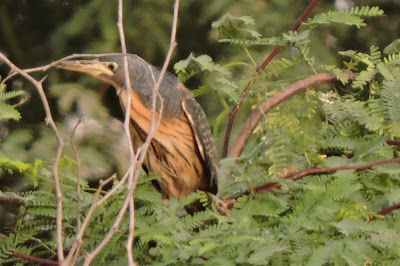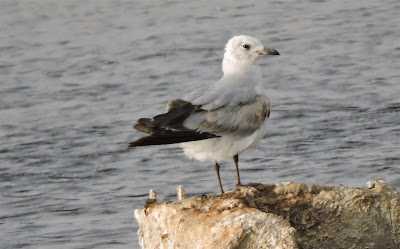I am glad I did.
The bad news was that inexplicably all the ducks have gone. Their numbers were well down on Saturday now there are currently none.
The excellent news is that I spotted a dwarf bittern.
dwarf bittern 1
dwarf bittern 2
This immature bird was in some very tall reeds. I flushed it by accident as I walked towards them. Luckily for me it flew into one of only three trees on the site. It stayed in an exposed position. The only downside of my viewing is that it was close to dusk.
Befoehand and given the lack of ducks, my attention had been drawn to the large numbers of gulls. I am still searching for some rare gulls which have been known in the capital coastal area.
lesser black-backed gull 1
No rarities were seen despite my intense efforts. I did see a lesser black-backed gull on this site for the first time. Previously I have only seen them on the coast.
lesser black-backed gull 2
Once again the most numerous gull was black-headed gull. Also once again no slender-billed gull were observed at this inland site.
black-headed gull (left)
The second most common gull was Mediterranean gull. Many of these and also of the black-headed gull are starting to acquire breeding plumage. This will make spotting of any exceptions in a group much easier.
Mediterranean gull (centre)
Others are still in winter plumage though at least for the moment.
Mediterranean gull
There has always been some turnover of wader species every time I have visited the lake. This time six ruff were on site for the first time.
ruff
A yellow wagtail of the sub species iberiae was present as well as several white wagtail.
yellow wagtail 1
I understand a few of this sub-species attempt to stay in North West Africa in coastal areas during the winter. I suspect this one was been forced down by the mid-winter cold snap up there.
yellow wagtail 2
Notably resident birds seen again included speckled pigeon and African swamphen.
speckled pigeon












No comments:
Post a Comment